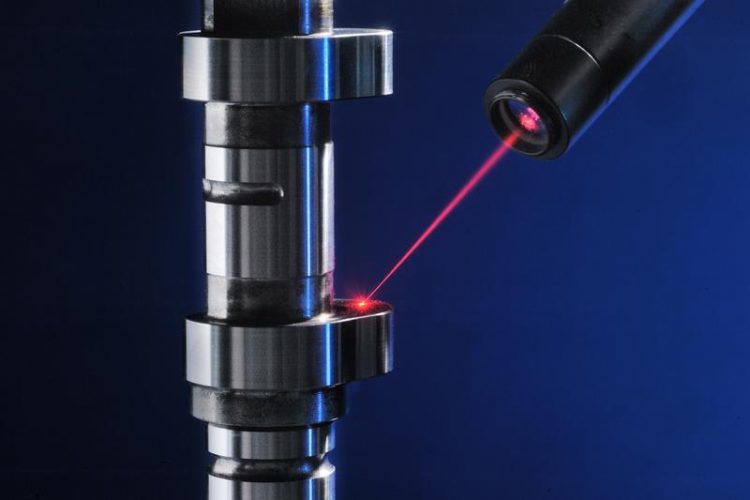Optoelectronic Inline Measurement – Accurate to the Nanometer

INSPIRE sensors for testing shape and positional tolerances on camshafts. Fraunhofer ILT, Aachen, Germany.
New Manufacturing Technologies for New Products
Implementing innovative concepts, such as for more efficient engines, mostly accompanies with advances in manufacturing technologies. Production tolerances of modern plants thus suffice to process metal components in the micrometer range and are just a thousandth of a millimeter thick. At the same time, a plant must be highly flexible so it can compensate for any fluctuations in raw materials and manufacture a wide range of products. That is why production technology’s next aim is to have plants that can manufacture individual components with the precision and at the cost of mass production.
Laser Measurement Technology as a Key Component
Sensors that can work precisely and reliably even under unfavorable conditions are paramount to monitoring and regulating such manufacturing processes. Interferometers are used under laboratory conditions to measure the shape of components with the highest precision – for example, thickness of sheet metal, roundness of rollers, and eccentricity of waves. In fact, Interferometers are so precise that they can be used to determine not just the component’s shape but also its surface roughness.
Sensors with Digitized Expert Knowledge
To this end, an interferometer’s settings must be adapted precisely to the measurement task at hand. This especially requires correct exposure time and focus; similar to taking a photo. In April this year, the collaborative project INSPIRE was started with the aim of developing an interferometer that can adapt to varying measuring conditions. “The sensors will have digitized expert knowledge and can autonomously optimize the settings,” explains Dr. Hölters from Fraunhofer ILT in Aachen. He coordinates the INSPIRE project, in which four other small and medium-sized enterprises are participating. With the development of fast control electronics, the sensors can adapt to rapidly changing measuring conditions within microseconds. This development will benefit conventional processes such as the cold rolling of sheet metal as well as machining processes such as welding.
Collaborative Project INSPIRE
The project idea of “Interferometric Distance Sensors with Automated Subsystems for Precision Inline Measurement to Regulate Automated Manufacturing Processes,” which in German produces the acronym INSPIRE, convinced the German Federal Ministry of Education and Research (BMBF) to pledge half the funding for the three-year long collaborative project as part of the “Digital Optics” funding initiative. Companies participating in the INSPIRE project are LSA – Laser Analytical Systems & Automation GmbH and Beratron GmbH from Aachen, HIGHYAG Lasertechnologie GmbH from Kleinmachnow, and Friedrich Vollmer Feinmessgerätebau GmbH from Hagen.
Contact
Dr. rer. nat. Stefan Hölters
Clinical Diagnostics and Microsurgical Systems Group
Phone +49 241 8906-436
stefan.hoelters@ilt.fraunhofer.de
Media Contact
All latest news from the category: Physics and Astronomy
This area deals with the fundamental laws and building blocks of nature and how they interact, the properties and the behavior of matter, and research into space and time and their structures.
innovations-report provides in-depth reports and articles on subjects such as astrophysics, laser technologies, nuclear, quantum, particle and solid-state physics, nanotechnologies, planetary research and findings (Mars, Venus) and developments related to the Hubble Telescope.
Newest articles

NASA: Mystery of life’s handedness deepens
The mystery of why life uses molecules with specific orientations has deepened with a NASA-funded discovery that RNA — a key molecule thought to have potentially held the instructions for…

What are the effects of historic lithium mining on water quality?
Study reveals low levels of common contaminants but high levels of other elements in waters associated with an abandoned lithium mine. Lithium ore and mining waste from a historic lithium…

Quantum-inspired design boosts efficiency of heat-to-electricity conversion
Rice engineers take unconventional route to improving thermophotovoltaic systems. Researchers at Rice University have found a new way to improve a key element of thermophotovoltaic (TPV) systems, which convert heat…



